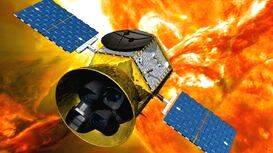

Aditya-L1 roared towards the sky while the scientist along with ISRO chief watched the proceedings in their non-chalant best. It was icing on the cake for ISRO as the jubilance over the Chandrayaan-3 success has not ebbed yet and comes Aditya-L1 with added joy. The mainspring behind all such triumph stories is the hard work and the confidence of Isro scientists and engineers. Not to mention the massive work from all staff who contributed to the mission.
It was after a decade and a half of research and design that ISRO decided to launch Aditya-L1 to study the sun. Praise is heaped on the scientists and technologists associated with the project, and it rightly serves them. However, the central government also needs to be lauded here for the years of support and holding the back of scientists despite the Chandrayaan-2 project going kaput.
The target of the solar probe is to reach the first Lagrange point, which is situated 15 lakh km away from Earth. PSLV-XL, fitted with six strap-on motors, the maximum for this expendable launch vehicle was prepared by the Vikram Sarabhai Space Center in Thiruvananthapuram. This XL series launch vehicle housed Aditya-L1 and was launched from SDSC in Sriharikota.
Aditya will be controlled to move above the earth‘s orbit in four stages. On September 18th, Aditya will be freed to move ahead toward the target, losing away from the Earth’s orbit. With this, India will become the fourth country in the world to launch a solar probe to the Sun.
From the Lagrange point, the spacecraft will observe the Sun and will send information back to Earth. Aditya is currently in an elliptical orbit between 245 km and 22,459 km from Earth. It will take a whole 125 days for the probe to reach the first Lagrange point. The probe is controlled from the ISRO Telemetry Tracking and Command Network in Bengaluru.
Aditya is ingeniously made by India and it is the chief fact that sits apart from the rest. No other country was involved in the works related to India’s solar probe. The probe is equipped with seven modern experimental instruments to closely observe the Sun. The spacecraft, which is expected to reach its target in the first week of the new year, has a five-year lifespan.
The spacecraft will be able to conduct solar exploration safely in the free space of Lagrange without the gravity of the Sun and Earth. With this project, India aims to acquire hitherto unknown details about the sun, mostly the composition of the sun, temperature variation, and solar explosions. The Aditya launch had the collaboration of 20 institutions, including six public sector institutions in Kerala. 38 electronic modules of Keltron have been used as part of the mission.
The indigenous development of cryogenic technology by ISRO has played the most important and crucial role in the mission.